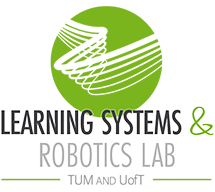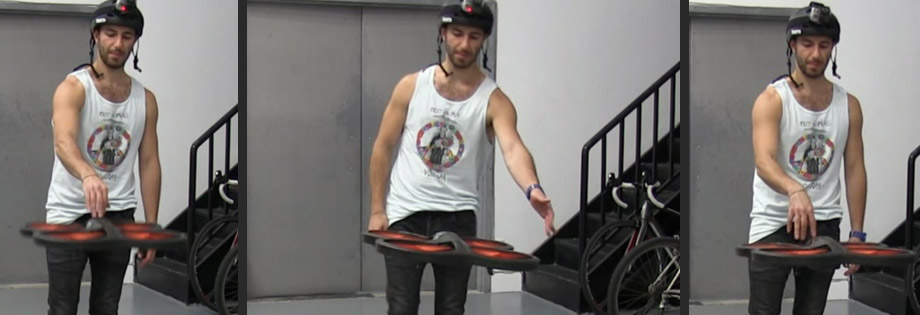The Flying Drum Machine
We developed a quadrotor aerial vehicle that can be used as a musical instrument. Using the idea of interactions based on physical contact, a system is developed that enables humans to engage in artistic expression with a flying robot and produce music. The interactive quadrocopter was programmed to drive playback of drum sounds in real-time in response to physical interaction. An intuitive mapping was developed between machine movement and drum sounds. The videos show a professional musician who used the interface to compose complex rhythm patterns.
Related Publication
This paper proposes the use of a quadrotor aerial vehicle as a musical instrument. Using the idea of interactions based on physical contact, a system is developed that enables humans to engage in artistic expression with a flying robot and produce music. A robotic user interface that uses physical interactions was created for a quadcopter. The interactive quadcopter was then programmed to drive playback of drum sounds in real-time in response to physical interaction. An intuitive mapping was developed between machine movement and art/creative composition. Challenges arose in meeting realtime latency requirements mainly due to delays in input detection. They were overcome through the development of a quick input detection method, which relies on accurate yet fast digital filtering. Successful experiments were conducted with a professional musician who used the interface to compose complex rhythm patterns. A video accompanying this paper demonstrates his performance.
@TECHREPORT{wang-tr15,
author = {Xingbo Wang and Natasha Dalal and Tristan Laidlow and Angela P. Schoellig},
title = {A Flying Drum Machine},
year = {2015},
urlvideo={https://youtu.be/d5zG-BWB7lE?list=PLD6AAACCBFFE64AC5},
abstract = {This paper proposes the use of a quadrotor aerial vehicle as a musical instrument. Using the idea of interactions based on physical contact, a system is developed that enables humans to engage in artistic expression with a flying robot and produce music. A robotic user interface that uses physical interactions was created for a quadcopter. The interactive quadcopter was then programmed to drive playback of drum sounds in real-time in response to physical interaction. An intuitive mapping was developed between machine movement and art/creative composition. Challenges arose in meeting realtime latency requirements mainly due to delays in input detection. They were overcome through the development of a quick input detection method, which relies on accurate yet fast digital filtering. Successful experiments were conducted with a professional musician who used the interface to compose complex rhythm patterns. A video accompanying this paper demonstrates his performance.}
}
In the Media
- Wired Germany, 13 February 2015:
“Zukunft der Musik / Diese Drohne ist ein fliegendes Schlagzeug“ - Ask Audio Magazine, 07 January 2015:
“WaveDNA Flying Drum Machine and Liquid Rhythm 1.4.3“ - Create Digital Music, 06 January 2015:
“Watch a Flying Drone Play a Drum Machine“ - Fast Company, 18 December 2014:
“Drone Plus Drum Machine Equals This Killer Flying Musical Instrument“

